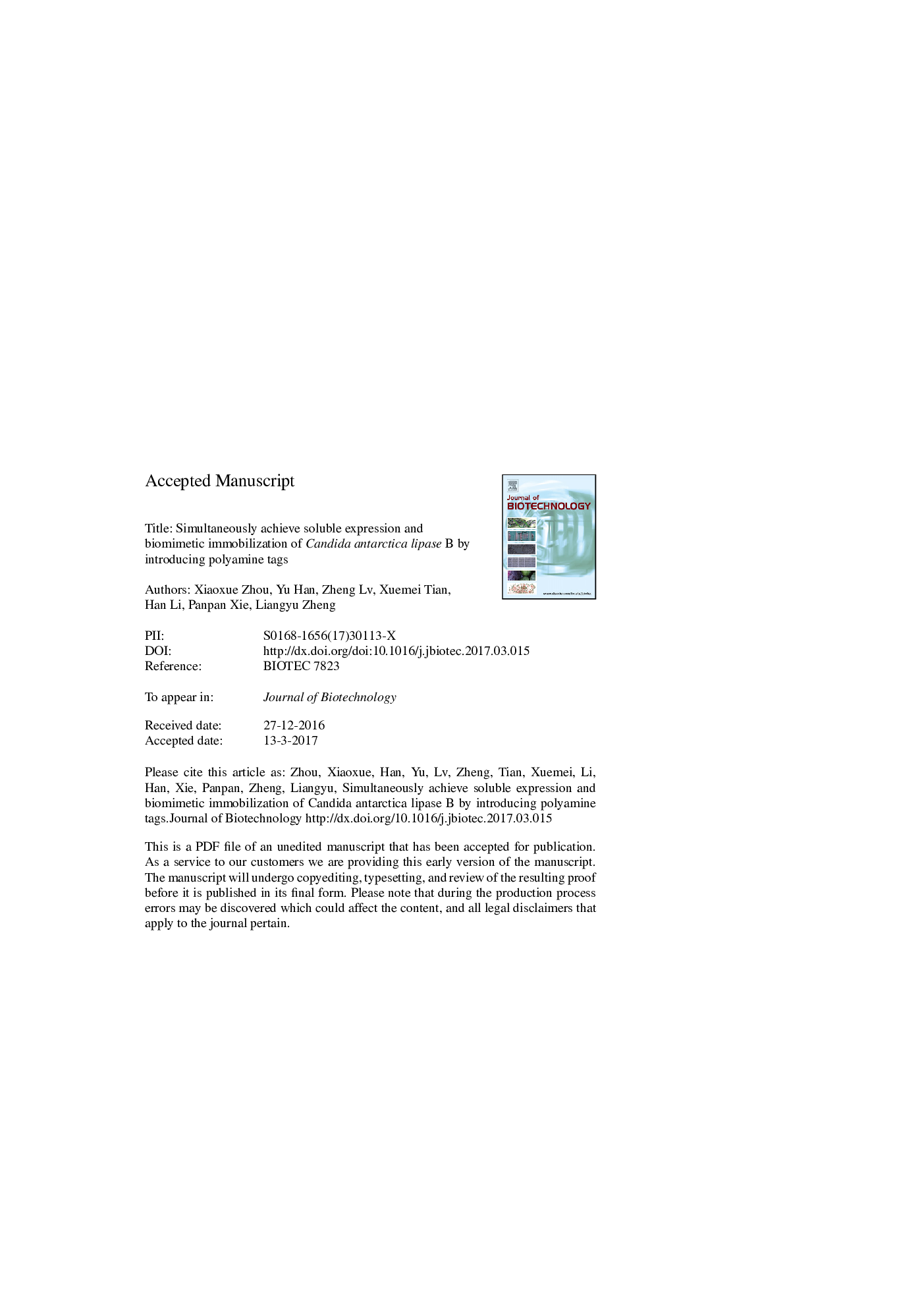| Article ID | Journal | Published Year | Pages | File Type |
|---|---|---|---|---|
| 4753671 | Journal of Biotechnology | 2017 | 27 Pages |
Abstract
Polyamine tags fused in Candida antarctica lipase B (CalB) can help achieve high soluble expression of CalB in E. coli and can directly mediate silicification, which leads to rapid formation of a CalB-silica particle complex through a one-step approach. After optimization experiments, the fused lipase CalB tagged with 6-histidine at the N terminal and 10-lysine at the C terminal (6His-CalB-10Lys) is effectively expressed with high solubility (0.1Â mg/mL) and specific activity (10.1Â U/mg), and easily cross-linked in silica particles with a high immobilization efficiency of 96.8% and activity recovery of 81.5%. The immobilized lipase 6His-CalB-10Lys exhibits excellent performance at broad temperature ranges, high thermal and storage stabilities, and superior reusability. Michaelis-Menten kinetics indicates that the affinity and enantioselectivity of the free and immobilized 6His-CalB-10Lys toward the substrate are better than that of commercial Novozym 435 in enantioselective resolution of (S)-N-(2-ethyl-6-methylphenyl) alanine ((S)-NEMPA). The strategies described in this paper are useful for the facile expression and construction of diverse enzyme systems with high efficiency and excellent recyclability.
Related Topics
Physical Sciences and Engineering
Chemical Engineering
Bioengineering
Authors
Xiaoxue Zhou, Yu Han, Zheng Lv, Xuemei Tian, Han Li, Panpan Xie, Liangyu Zheng,
